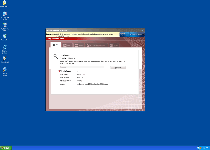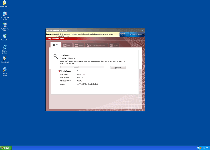Strong Malware Defender
Posted: February 20, 2012
Threat Metric
The following fields listed on the Threat Meter containing a specific value, are explained in detail below:
Threat Level: The threat level scale goes from 1 to 10 where 10 is the highest level of severity and 1 is the lowest level of severity. Each specific level is relative to the threat's consistent assessed behaviors collected from SpyHunter's risk assessment model.
Detection Count: The collective number of confirmed and suspected cases of a particular malware threat. The detection count is calculated from infected PCs retrieved from diagnostic and scan log reports generated by SpyHunter.
Volume Count: Similar to the detection count, the Volume Count is specifically based on the number of confirmed and suspected threats infecting systems on a daily basis. High volume counts usually represent a popular threat but may or may not have infected a large number of systems. High detection count threats could lay dormant and have a low volume count. Criteria for Volume Count is relative to a daily detection count.
Trend Path: The Trend Path, utilizing an up arrow, down arrow or equal symbol, represents the level of recent movement of a particular threat. Up arrows represent an increase, down arrows represent a decline and the equal symbol represent no change to a threat's recent movement.
% Impact (Last 7 Days): This demonstrates a 7-day period change in the frequency of a malware threat infecting PCs. The percentage impact correlates directly to the current Trend Path to determine a rise or decline in the percentage.
| Threat Level: | 10/10 |
|---|---|
| Infected PCs: | 28 |
| First Seen: | February 20, 2012 |
|---|---|
| Last Seen: | October 26, 2022 |
| OS(es) Affected: | Windows |
 Strong Malware Defender is both a clone of other variants of fake anti-malware products from the WinPC Defender family and an indulger in a variety of anti-security attacks. Any PC that's been infected by Strong Malware Defender is in danger of having its real security replaced by Strong Malware Defender's fake offerings, as well as browser redirects and blocked applications while Strong Malware Defender attempts to persuade you to purchase Strong Malware Defender. SpywareRemove.com malware experts encourage you to reject Strong Malware Defender's farcical form of promotion and remove Strong Malware Defender in the same fashion that you'd deal with any type of Trojan or rootkit – by using legitimate anti-malware products to delete Strong Malware Defender and related PC threats via in-depth system scans.
Strong Malware Defender is both a clone of other variants of fake anti-malware products from the WinPC Defender family and an indulger in a variety of anti-security attacks. Any PC that's been infected by Strong Malware Defender is in danger of having its real security replaced by Strong Malware Defender's fake offerings, as well as browser redirects and blocked applications while Strong Malware Defender attempts to persuade you to purchase Strong Malware Defender. SpywareRemove.com malware experts encourage you to reject Strong Malware Defender's farcical form of promotion and remove Strong Malware Defender in the same fashion that you'd deal with any type of Trojan or rootkit – by using legitimate anti-malware products to delete Strong Malware Defender and related PC threats via in-depth system scans.
Strong Malware Defender: A Strongman at Handing Out Bad Threat Alerts
Strong Malware Defender is a duplicate of other rogue anti-malware scanners that lazily share both its looks and its promotion strategy, which relies on fake alerts and fraudulent scanner results. Strong Malware Defender's cousins number amongst them Ultimate Defender, SystemDefender, IE Defender, Advanced XP Defender, XP Defender, WinDefender2008, PCTotalDefender, PC Defender 2008, Personal Defender 2009, WinDefender 2009, Perfect Defender 2009, Total Defender, Malware Defender 2009, WinPC Defender, PC Privacy Defender, Smart Defender Pro, Rogue.UltimateDefender, FraudTool.LastDefender.b and Security Defender Pro 2015. Each of these fake anti-malware applications will try to lure you into spending money on a registered or activated version of their software, but since Strong Malware Defender and related PC threats don't have legitimate security features, there's no reason to do this. SpySpywareRemove.com malware analysts have provided the following examples of fake alerts that are used by Strong Malware Defender and other members of its scamware family:
System warning
No real-time malware, spyware and virus protection was found. Click here to activate.
Security Center Alert
To help protect your computer, Security Center has blocked some features of this program.
Name: Win64.BIT.Looker.exe
Risk: High
ERROR MESSAGE:
Warning
Warning! Virus detected
Threat Detected: Trojan-Spy.HTML.Sunfraud.a
Warning! Identity theft attempt detected
Hidden connection IP: 128.154.26.11
Target: Microsoft Corporation keys
Security Center
Unauthorized remote connection!
Your system is making an unauthorized personal data transfer to a remote computer!
Warning! Unauthorized personal data transfer is detected! It may be your personal credit card details, logins and passwords, browsing habits or information about files you have downloaded.
To protect your private data, please click 'Prevent Connection' button below.
WARNING! 371 threats detected
Detected malicious programs can damage your computer and compromise your privacy. It’s strongly recommended to remove them immediately [sic]!
Potential risks: Infecting other computers on your network
Continue unprotected Remove all threats now
Strong Malware Defender will launch itself without your permission by using typical Registry-based exploits, and as such, may try to scan your PC whenever you load Windows. Scanner results can also be ignored, even if they point to unfamiliar files on your computer since Strong Malware Defender may also create fake .dll and .sys file 'infections' explicitly for this purpose.
Beating Strong Malware Defender Out of Your PC in a Contest of Wills
Although, in normal scenarios, removing Strong Malware Defender should use a legitimate anti-malware program, SpySpywareRemove.com malware experts caution that you should also be alert for other attacks that Strong Malware Defender may make during this process. Common risks from Strong Malware Defender may also extend to:
- Redirect attacks that force your web browser to load unusual websites.
- Blacklisting arbitrary programs on your PC.
However, these issues can be disabled by using standard anti-malware procedures to stop Strong Malware Defender from launching itself (for example, by using a USB-based boot, booting into Safe Mode or using another OS). Afterwards, a complete scan of your PC should be able to delete Strong Malware Defender without lingering side effects or undesired damage to your OS.





Technical Details
File System Modifications
Tutorials: If you wish to learn how to remove malware components manually, you can read the tutorials on how to find malware, kill unwanted processes, remove malicious DLLs and delete other harmful files. Always be sure to back up your PC before making any changes.
The following files were created in the system:%ALLUSERSPROFILE%\2dd492\StrongMD.exe
File name: StrongMD.exeSize: 4.3 MB (4308480 bytes)
MD5: 23f945317255b67992d1e69a092a70c2
Detection count: 96
File type: Executable File
Mime Type: unknown/exe
Path: %ALLUSERSPROFILE%\2dd492
Group: Malware file
Last Updated: February 23, 2012
%ALLUSERSPROFILE%\Application Data\ba4db\SMbf0.exe
File name: SMbf0.exeSize: 6.72 MB (6725632 bytes)
MD5: 4c8f629b6cb36c5af155c225fc95e383
Detection count: 89
File type: Executable File
Mime Type: unknown/exe
Path: %ALLUSERSPROFILE%\Application Data\ba4db
Group: Malware file
Last Updated: February 23, 2012
%ALLUSERSPROFILE%\b839e1\StrongMD.exe
File name: StrongMD.exeSize: 4.3 MB (4308480 bytes)
MD5: d4d7cfef9f046c27ea229f7c1db3f624
Detection count: 5
File type: Executable File
Mime Type: unknown/exe
Path: %ALLUSERSPROFILE%\b839e1
Group: Malware file
Last Updated: February 23, 2012
%StartMenu%\Strong Malware Defender.lnk
File name: %StartMenu%\Strong Malware Defender.lnkFile type: Shortcut
Mime Type: unknown/lnk
Group: Malware file
%Programs%\Strong Malware Defender.lnk
File name: %Programs%\Strong Malware Defender.lnkFile type: Shortcut
Mime Type: unknown/lnk
Group: Malware file
%Desktop%\Strong Malware Defender.lnk
File name: %Desktop%\Strong Malware Defender.lnkFile type: Shortcut
Mime Type: unknown/lnk
Group: Malware file
%CommonAppData%\[random]\ASE.ico
File name: %CommonAppData%\[random]\ASE.icoMime Type: unknown/ico
Group: Malware file
%CommonAppData%\[random]\[random].exe
File name: %CommonAppData%\[random]\[random].exeFile type: Executable File
Mime Type: unknown/exe
Group: Malware file
%CommonAppData%\[random]\[random].cfg
File name: %CommonAppData%\[random]\[random].cfgMime Type: unknown/cfg
Group: Malware file
%AppData%\Strong Malware Defender\Instructions.ini
File name: %AppData%\Strong Malware Defender\Instructions.iniMime Type: unknown/ini
Group: Malware file
%AppData%\Strong Malware Defender\ScanDisk_.exe
File name: %AppData%\Strong Malware Defender\ScanDisk_.exeFile type: Executable File
Mime Type: unknown/exe
Group: Malware file
%AppData%\Microsoft\Internet Explorer\Quick Launch\Strong Malware Defender.lnk
File name: %AppData%\Microsoft\Internet Explorer\Quick Launch\Strong Malware Defender.lnkFile type: Shortcut
Mime Type: unknown/lnk
Group: Malware file
Registry Modifications
HKEY_LOCAL_MACHINE\SOFTWARE\Microsoft\..{RunKeys}HKEY_CURRENT_USER\Software\Microsoft\Windows\CurrentVersion\Run "Strong Malware Defender" "%CommonAppData%\[random]\[random].exe" /s /d
Leave a Reply
Please note that we are not able to assist with billing and support issues regarding SpyHunter or other products. If you're having issues with SpyHunter, please get in touch with SpyHunter customer support through your SpyHunter . If you have SpyHunter billing questions, we recommend you check the Billing FAQ. For general suggestions or feedback, contact us.